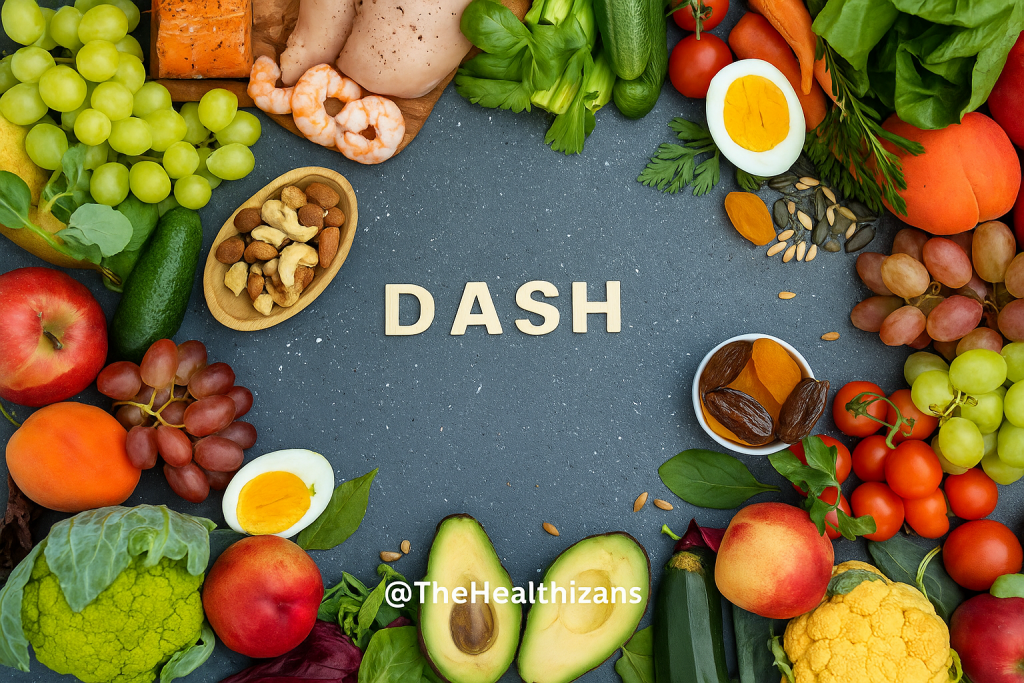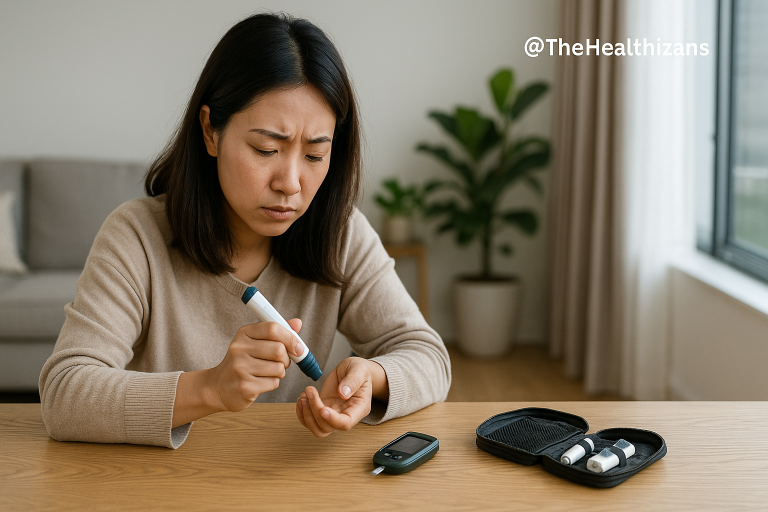
🥗 What Is the DASH Diet (and Why Are Doctors Always Recommending It)?
If you’ve ever been advised to monitor your blood pressure, there’s a good chance you’ve come across the DASH diet — an acronym for Dietary Approaches to Stop Hypertension. Unlike fleeting food trends, DASH is one of the most researched and globally endorsed eating plans. It’s backed by major health organisations such as the World Health Organization (WHO), American Heart Association (AHA), National Heart, Lung, and Blood Institute (NHLBI), and the NHS.
But what exactly makes the DASH diet so effective? Let’s unpack how it works, what foods it prioritises, and why it’s considered a powerful, long-term strategy for lowering blood pressure and improving heart health.
🧠 How Does the DASH Diet Help Lower Blood Pressure?
The DASH diet is specifically designed to reduce high blood pressure without the need for medication in many cases. It works by:
- Reducing sodium intake 🧂 — too much salt makes the body hold onto water, increasing blood volume and pressure.
- Increasing potassium, calcium, and magnesium 🥬 — these essential minerals help relax blood vessels and flush out excess sodium.
- Promoting whole, unprocessed foods 🥗 — supporting weight loss, stabilising blood sugar, and lowering cholesterol.
- Encouraging long-term changes — unlike crash diets, DASH builds healthy eating habits that can last a lifetime.
Clinical studies have shown that people following DASH can lower their systolic blood pressure by up to 11 mmHg — a significant improvement, especially for those with stage 1 hypertension.
🍎 What You’re Encouraged to Eat (DASH Targets)
Here’s a breakdown of recommended servings based on a 2,000-calorie daily intake:
| Food Group | Daily/Weekly Servings |
|---|---|
| Vegetables | 4–5 servings per day 🥦 |
| Fruits | 4–5 servings per day 🍎 |
| Whole Grains | 6–8 servings per day 🍞 |
| Low-Fat Dairy | 2–3 servings per day 🥛 |
| Lean Meats, Poultry, Fish | ≤ 2 servings per day 🍗 |
| Nuts, Seeds, Legumes | 4–5 servings per week 🥜 |
| Healthy Fats & Oils | 2–3 servings per day 🥑 |
| Sweets & Added Sugars | < 5 servings per week 🍬 |
Note: One serving of vegetables is roughly 1 cup of raw leafy vegetables or ½ cup of cooked veggies.
🛑 What to Reduce or Avoid
To get the most out of the DASH approach, it’s important to limit the following:
- Salt-heavy foods: Processed meats, canned soups, crisps, stock cubes, and instant noodles.
- Sugary drinks: Sodas, energy drinks, sweetened teas — they spike blood sugar and increase heart risk.
- Fatty meats: Red meats, bacon, sausages, and deli meats are high in saturated fat and sodium.
- Full-fat dairy & creamy sauces: These can raise LDL (bad) cholesterol and promote weight gain.
- Alcohol (excessive intake): Moderation is key. Excessive alcohol raises blood pressure and harms the liver.
🔍 Tip: Check food labels. Many packaged foods have hidden sodium — especially in sauces, bread, and breakfast cereals.
🧂 Is Salt Really That Bad?
Yes — but the issue is excess. While the body needs sodium for nerve and muscle function, the global average sodium intake is nearly double the recommended amount. The WHO recommends less than 2,000 mg of sodium per day (or under 5 grams of salt).
DASH doesn’t eliminate salt but focuses on natural ways to balance it — by boosting potassium and eating foods in their natural state.
🍽 DASH in Real Life: Easy Meal Ideas
- Breakfast: Overnight oats with banana, flaxseed, and almond milk
- Lunch: Lentil and quinoa salad with mixed vegetables and olive oil dressing
- Dinner: Grilled salmon, sweet potatoes, and steamed broccoli
- Snacks: Unsalted nuts, Greek yoghurt, or carrot sticks with hummus
🛒 Shopping tip: Choose fresh or frozen vegetables without added salt, and opt for wholegrain bread and brown rice.
🌍 A Global Strategy for a Global Problem
Hypertension is a leading risk factor for stroke, heart failure, and kidney disease, and it’s rising in both developed and developing countries. In Africa and South-East Asia, the prevalence of undiagnosed and poorly managed hypertension remains a challenge. The DASH diet offers a culturally adaptable, low-cost intervention.
Studies in Nigeria, India, and parts of the Caribbean have shown that local DASH-style adaptations using native grains (like millet and sorghum), legumes (like black-eyed peas), and seasonal vegetables can effectively reduce blood pressure.
✅ Final Thoughts
The DASH diet isn’t about giving up your favourite foods — it’s about making better choices, one plate at a time. Whether you’re 25 or 65, making small, consistent changes based on DASH principles can significantly improve your cardiovascular health.
💬 Start small — maybe add one serving of vegetables per day or swap white rice for brown. These changes add up.
Stay informed. Live well. Together.
📚 References
- National Heart, Lung, and Blood Institute (NHLBI)
- World Health Organization. (2023). Sodium Intake Recommendations
- American Heart Association. (2023). Dietary Guidelines for Hypertension
- NHS UK. (2022). Lowering Blood Pressure Through Diet
- Nigerian Journal of Clinical Practice (2022). Local Adaptations of DASH Diet
- South Asian Journal of Preventive Cardiology (2021)



